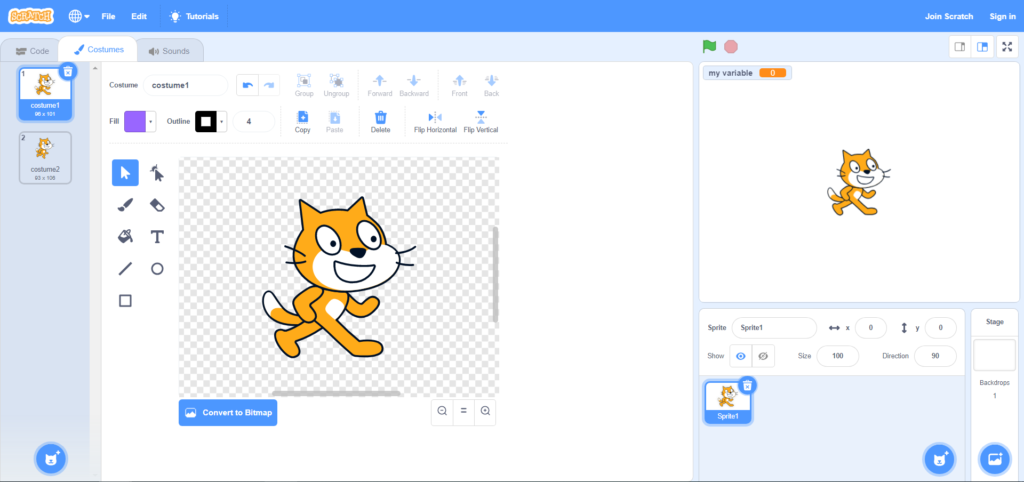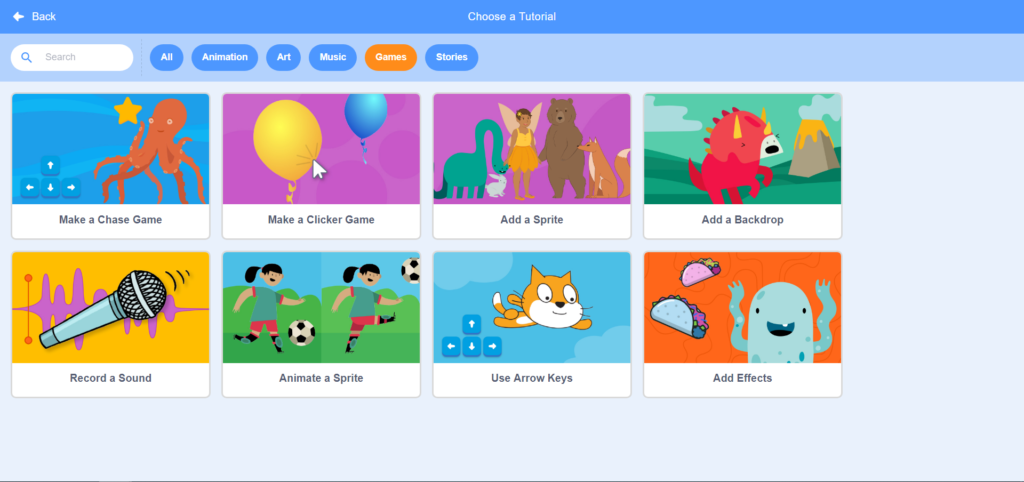Scratch is a visual programming language focused on fostering creativity and logical thinking. Although any age is good to learn, children are ideal recipients for Scratch. By teaching them how to use Scratch we are helping them to face and solve situations and problems of all kinds in a logical and structured way.
When we begin to teach a child to program in Scratch, the main objective should be to be able to grasp and assimilate concepts, basic ideas and workflows about programming and computational thinking in a fun and attractive way, so that an interest and technical basis generate courage to study.
Benefits of Children Learning Programming with Scratch
Scratch is a visual language developed by MIT and that is based on blocks coming together as a puzzle. It is a simple way to learn programming. But that simplicity of the interface or its color should not hide powerful language that admits large projects that can be achieved gradually.
Encouraging the Creativity and Logical Thinking
The use of Scratch encourages the development of logical thinking through the search for different solutions to a problem. By programming, the child is able to develop his capacity to be more structured and organized in the management of resources and the use of tools that lead him to reach the resolution of a specific task.
The colored blocks are grouped, dragged and released to obtain an immediate result. Speaking of children, it allows them to create movements, add sounds, change scenarios or create games in a simple way, contributing to develop their creativity.
The recommended age to start using Scratch would be 6-7 years or when they start reading fluently. But if not, there is the Junior version in which, on the same basis, the language is purely visual.
How to start with Scratch. Installation and first steps

Starting to have fun and learn with Scratch is fast, simple and free. The new version Scratch 3.0 leaves Flash behind and this allows us to use it in any current device without problems.
It works via web browser, so both computers and tablets and even smartphones can be used to execute programs made with Scratch. Just go to the Scratch web address and get started.
If you prefer to use a local version that does not require an Internet connection, there are desktop versions of Scratch 3.0 for Windows, Linux and Mac operating systems.
Although to use Scratch it is not necessary to make a registration, it is advisable to create an account for the child and so that he can save the projects he is doing. Or to continue with one already done or not finished.
Registration is open and there are no minimum age requirements, but it is necessary to confirm the account with an email from the parent / tutor.
First Projects With Scratch

Once we have the necessary resources and equipment, the most important and expected moment of all comes: start programming with Scratch. At these early ages it is vital that learning be meaningful and also fun. If we get the child to learn Scratch while having fun, we have a good chance of getting it.
Games and Small Projects
The ideal way to start programming with Scratch is to learn based on challenges with games and small projects where children can unleash their creativity.
With the new version 3.0 which resource has been enhanced and is now more intuitive. It allows practice while watching video or animated images. In addition, they now include a teacher’s guide and the programming cards associated with that particular project.
Once the children already know the interface and some of the options, from MIT they offer simple projects associated with different areas and objectives. In these projects children should modify the base project freely, modifying or adding elements according to their criteria.
Any project published in Scratch can be used as a basis for learning. Just “look inside” to begin to know the code with which it is built and freely modify or adapt it
Another resource recognized and guided with the help of videos is the Hour of Code. Through short and even thematic activities such as the Carton Network, the child can have short-term first contact on programming.

Although there are projects or guided games with a fixed structure that must be followed, it is recommended that children themselves can make personal decisions or trial / error tests with elements that do not alter the main objective of the programming exercise but that help them be participants in their learning.
Another recommendation to teach Scratch to children is that we can preview to change or add new features and improvements once the project base is finished. With this we continue promoting their creativity as well as learning at their own pace.
Combining physical Elements with Scratch
When the children already know the Scratch interface, the main blocks and have made their first projects, it is a good time to enhance further their creativity with the help of physical elements that can be programmed using Scratch directly. Children will see that they can build robots with recycled materials or pianos using fruits, and then they are the ones who decide how they should work.
ABOUT THE AUTHOR:
Nicholas H. Parker is one of web designers at Buy Essay Club. He worked as an SEO specialist for more than 5 years. It helped him estimate and analyze the business sphere better. Besides, he tries to keep up with advancing technologies.





